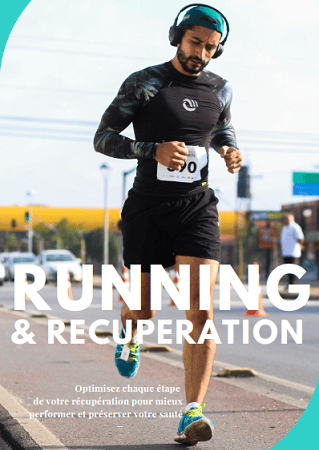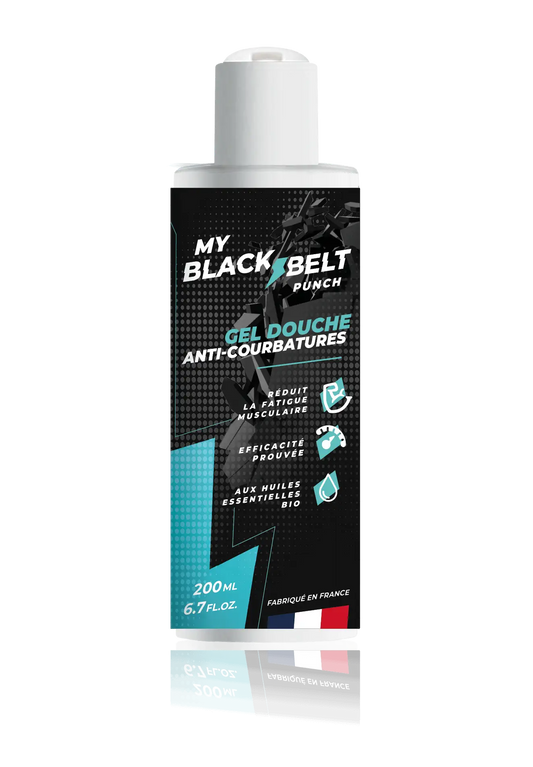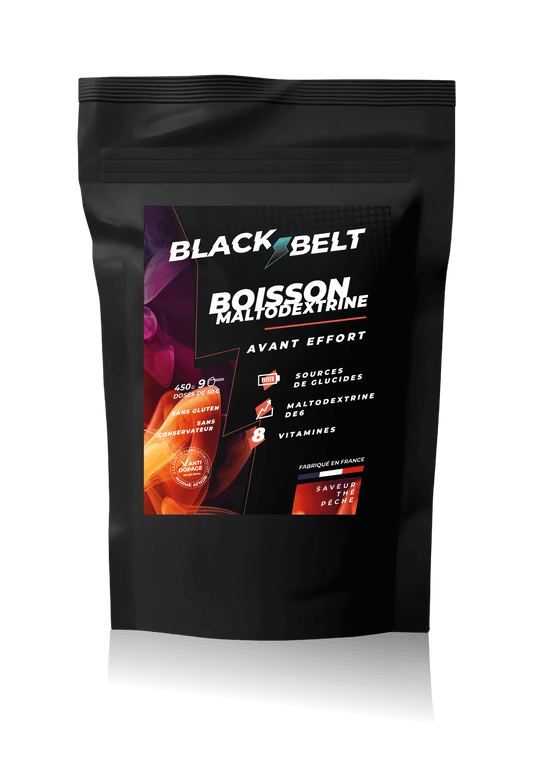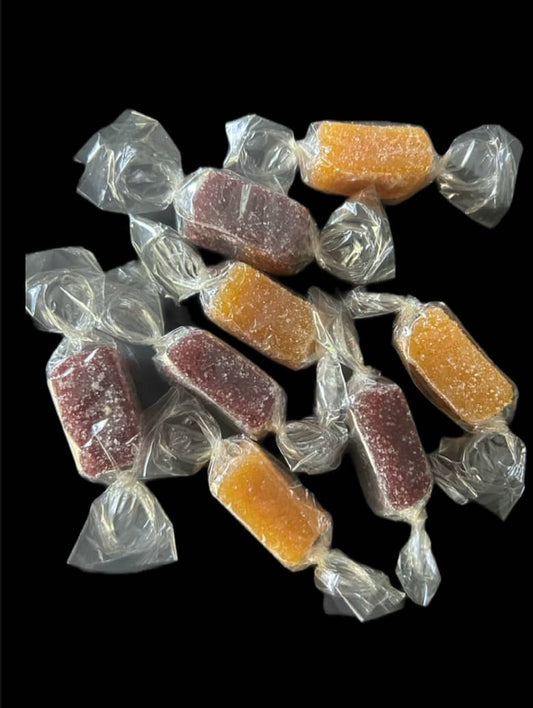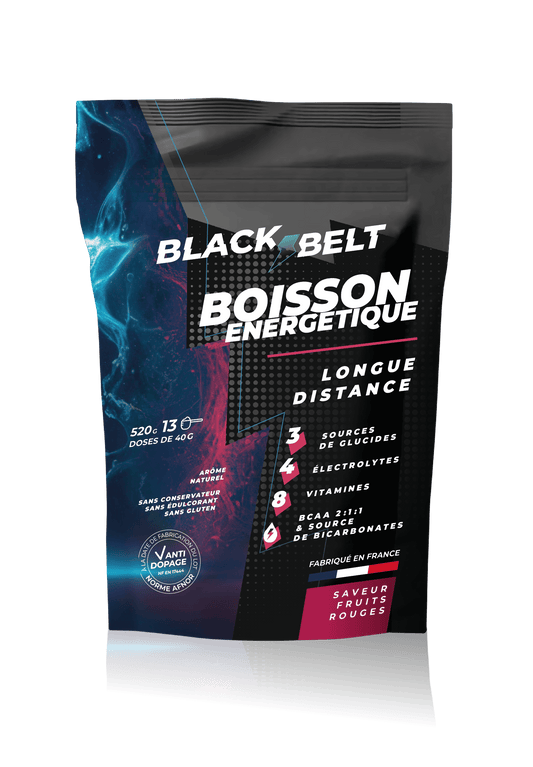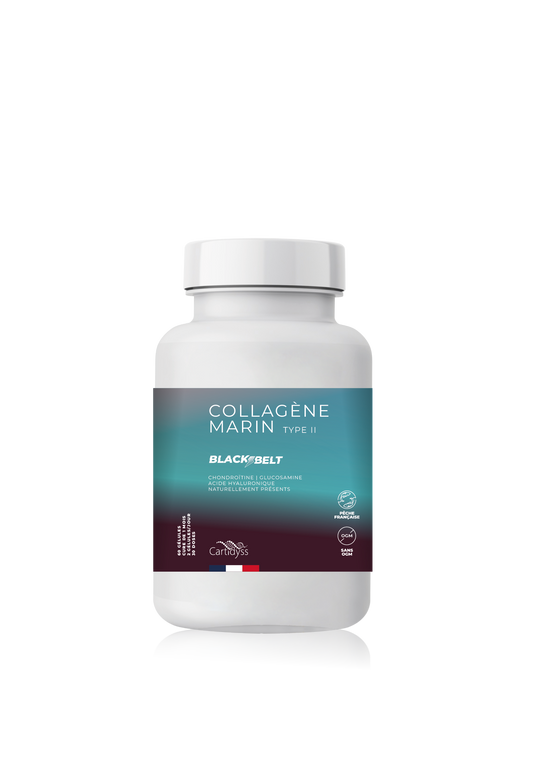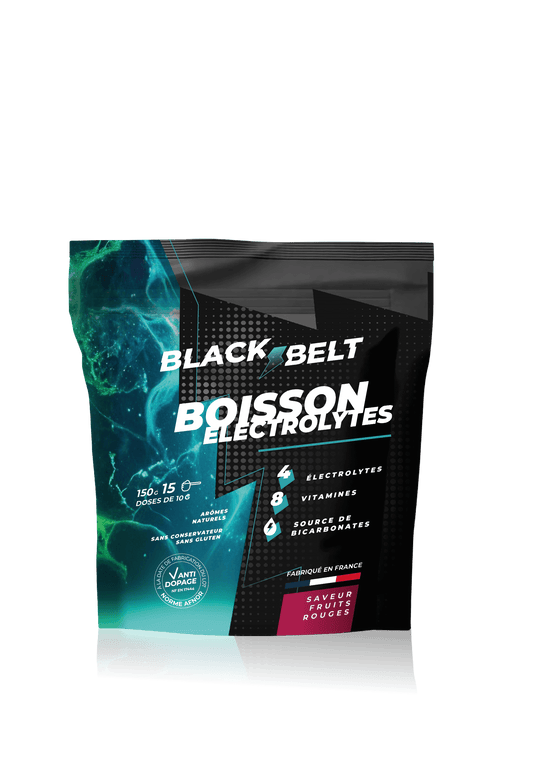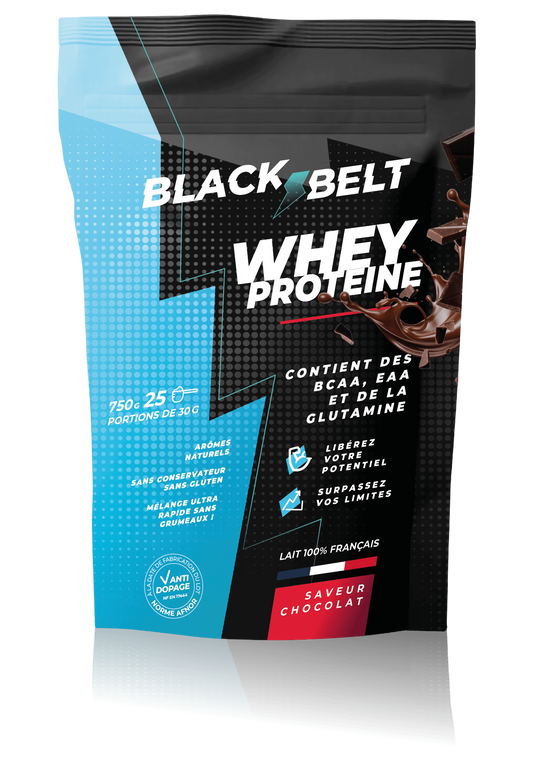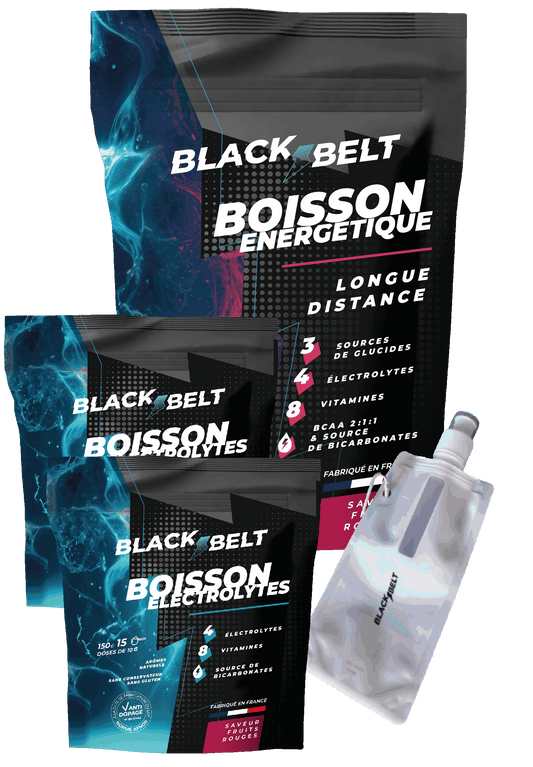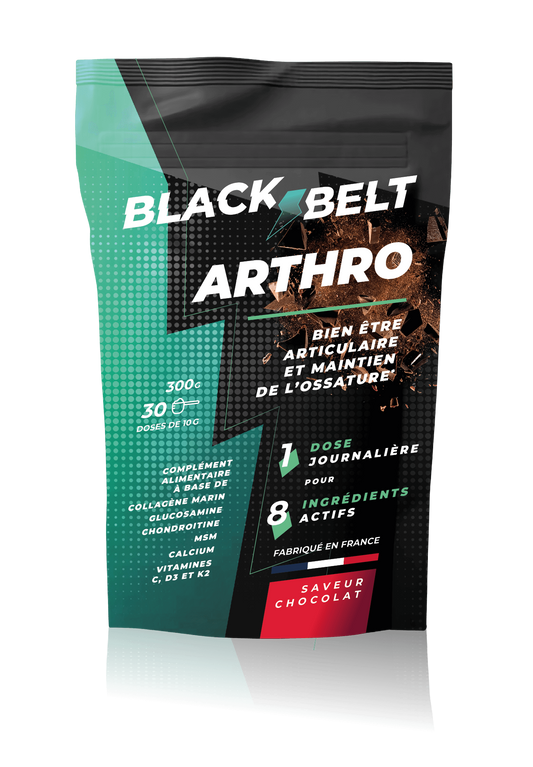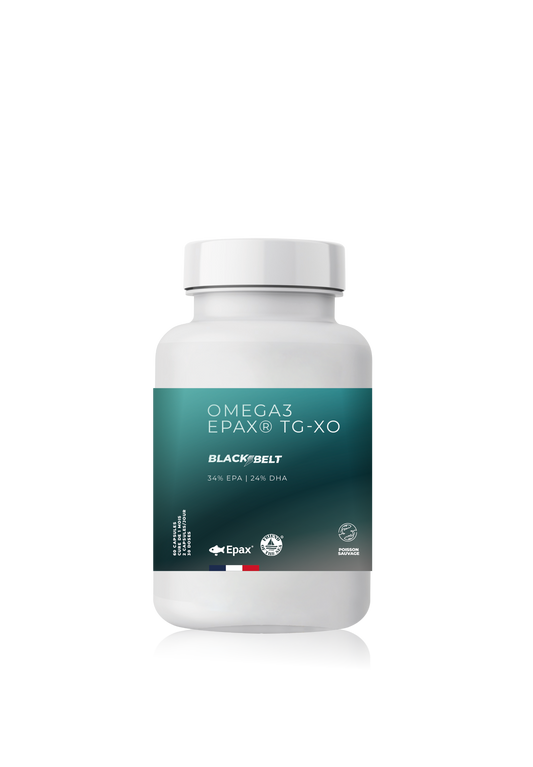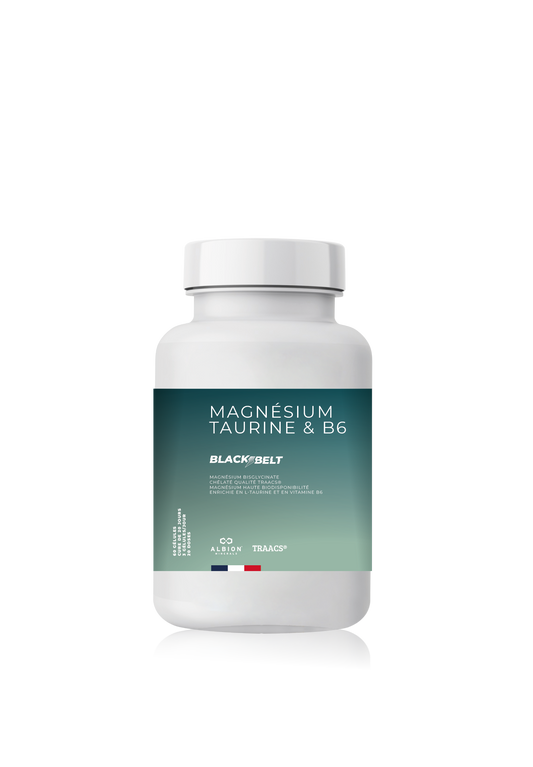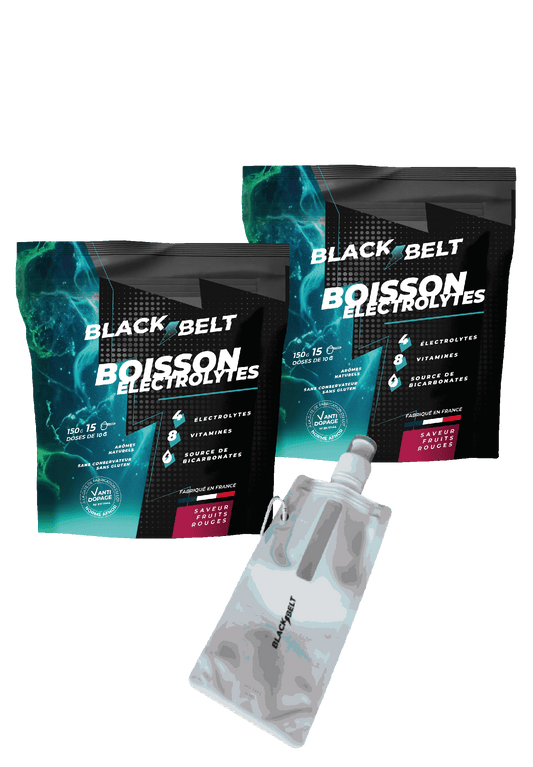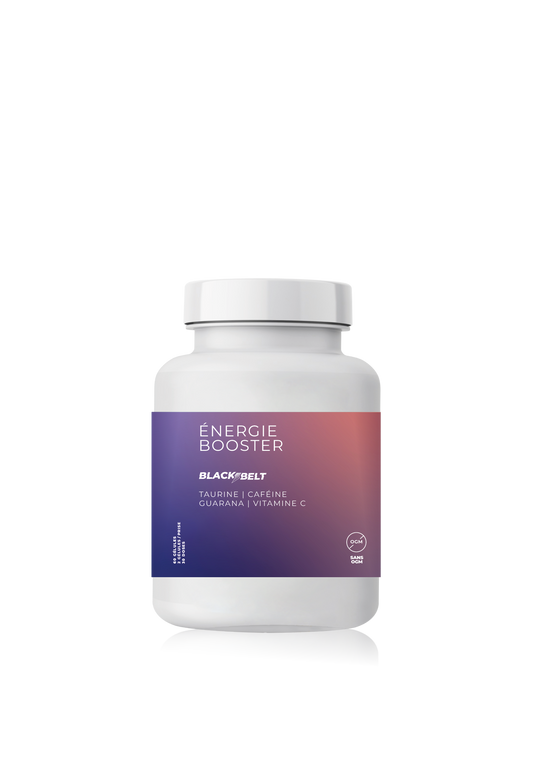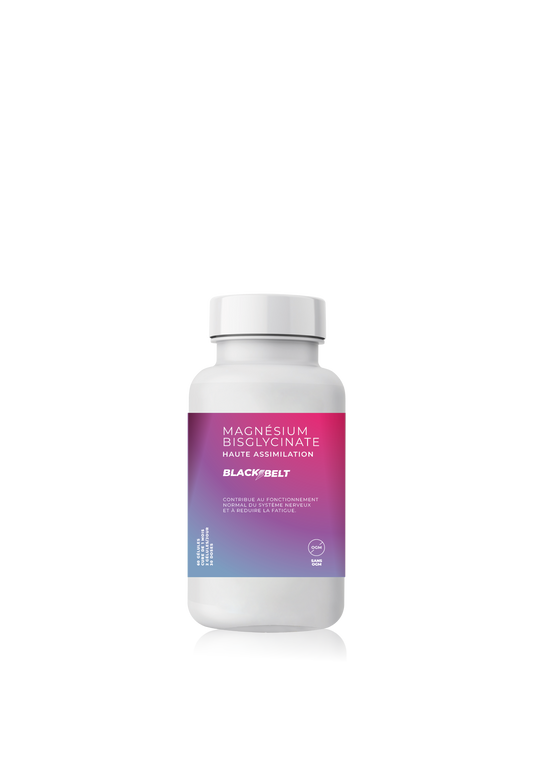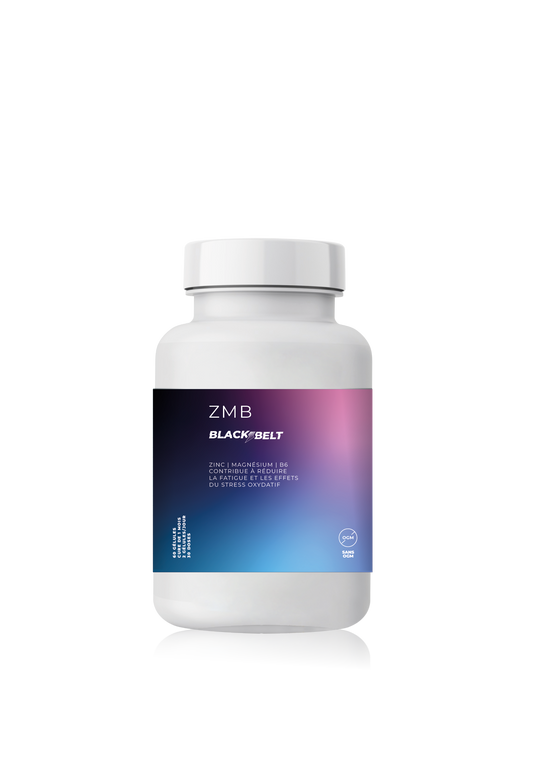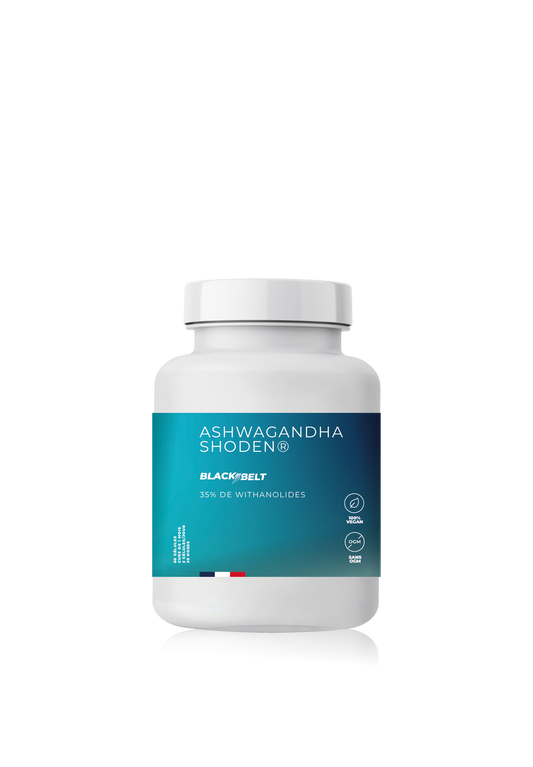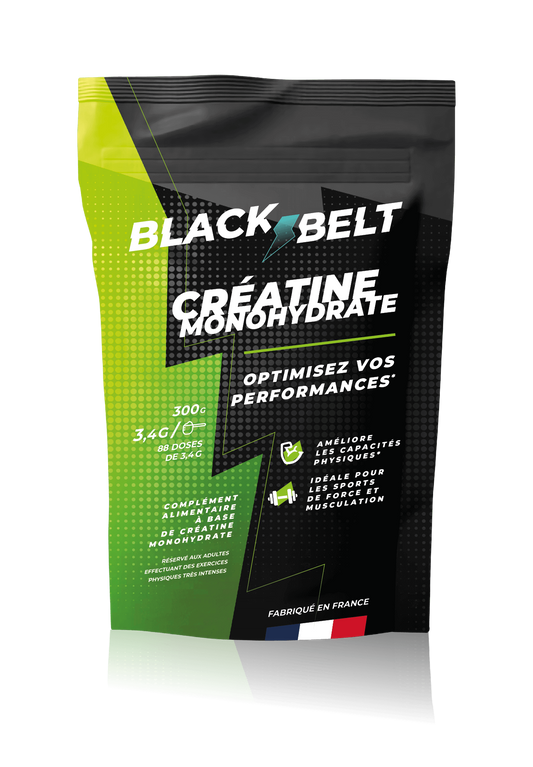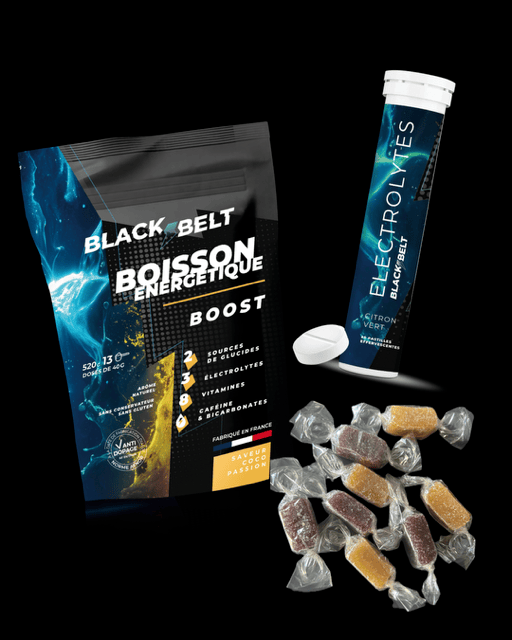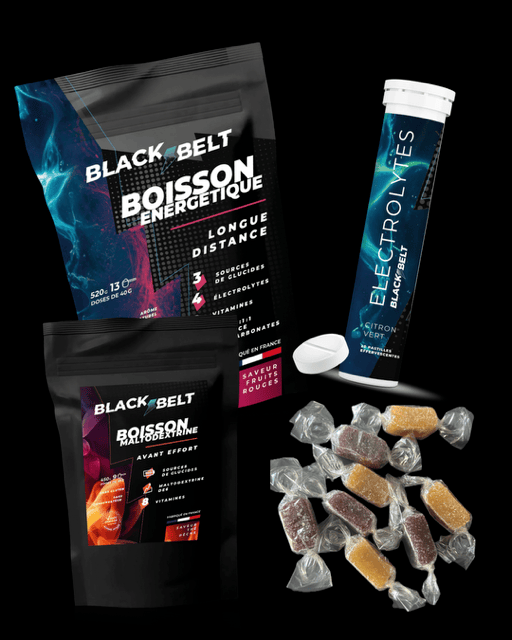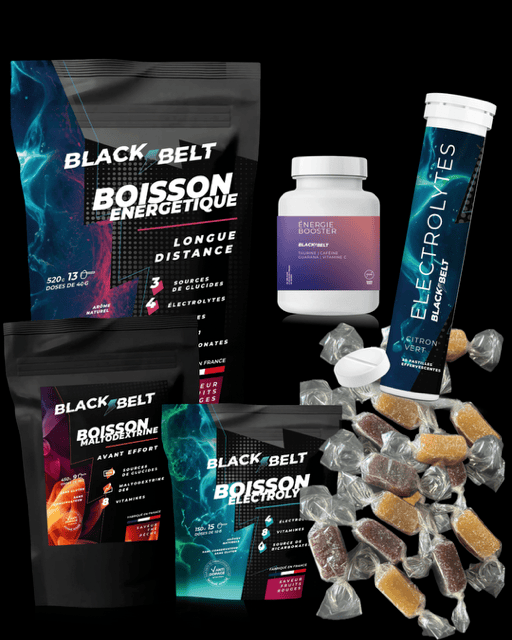
Share
How to measure electrolytes to avoid cramps during ultra-trail?
When you're embarking on an ultra-trail, there's only one thing that can turn an epic moment into a dramatic comedy scene: muscle cramps. Fortunately, the right electrolyte intake can save your race . In this article, we'll explain how to balance your electrolytes to avoid looking like undercooked spaghetti at the end of your run.
Why electrolytes are essential for ultra-trails
Electrolytes, such as sodium, potassium, magnesium, and calcium, play a crucial role in muscle contraction and nerve transmission. During an ultra-trail, you sweat a lot, and with sweat comes electrolyte loss. If you don't replace them, it's inevitable: your muscles will go on strike—and no strike is rarely fun! Electrolytes are essential for running, and especially for ultratrails!
How to calculate your electrolyte needs?
Signs of electrolyte deficiency
First of all, learn to recognize the warning signs of an electrolyte deficiency :
• Muscle cramps (the classic alarm signal)
• Unusual fatigue
• Weakness or dizziness
• Irritability (yes, even your mood can betray you)
The recommended amount for trail running
There's no magic formula for all runners, but generally, for ultra-trail running, the idea is to compensate for the loss per hour of effort. For example, some experts suggest consuming around 300 to 600 mg of sodium per hour, along with other electrolytes depending on your profile. Of course, these values vary from one runner to the next. Consider consulting a sports dietitian for a personalized plan (and to avoid turning your fueling into a magic potion worthy of a sci-fi movie).
It is important to rely on the most effective electrolyte drink possible, such as that of Blackbelt, to compensate for your electrolyte losses when running or, more broadly, in endurance sports.

Tips for effectively measuring your electrolytes
Planning your running and trail running supplies
The key to a good strategy is preparation. Before the race, take stock of your sweat rate and experiment with different electrolyte intakes during your long workouts. Note what works for you and feel free to adjust the formula of your sports drink.
Adapt according to the conditions for your race
Electrolyte needs vary depending on temperature, humidity, and exercise intensity. A hot day often requires a higher intake. Also consider your type of running and your own physiology. For example, if you've always been the "salt king" at the end of a race, you know a supplement is in order.
Some practical tips to avoid cramps with electrolytes
The anecdote of the cramped runner
Picture this: You're climbing a mountain pass, sweating, and suddenly... BAM! Your calves are turning into Gordian knots. You're convinced even your shoes could scold you. The moral of the story? Don't let your electrolytes play coy. Plan, test, and adapt your fueling to avoid this kind of situation.
A little nod to science
If the science seems as obscure as the latest episode of a thriller, know that the right electrolyte dosage is a careful mix of personal experience and nutritional recommendations. So, put on your amateur scientist hat (or wear it with your compression socks, it's trendy) and adjust your intake to stay in control until the finish line.

Conclusion for measuring electrolytes to avoid cramps in ultra-trail.
In short, to avoid ending your ultra-trail in an involuntary contortionist position, it's essential to get your electrolytes right. Test, adjust, and above all, have fun fine-tuning your nutrition strategy—after all, running is also about having fun (and avoiding looking like undercooked spaghetti)!
So, are you ready to take on the challenge of ultra-trail running without the cramps ?
Also check out our tools:

